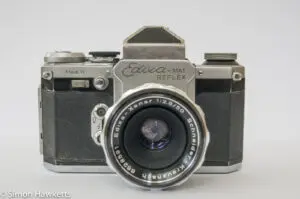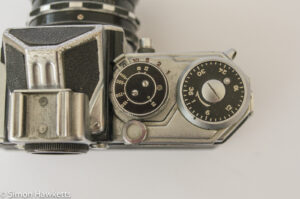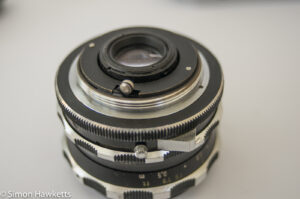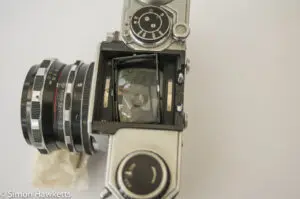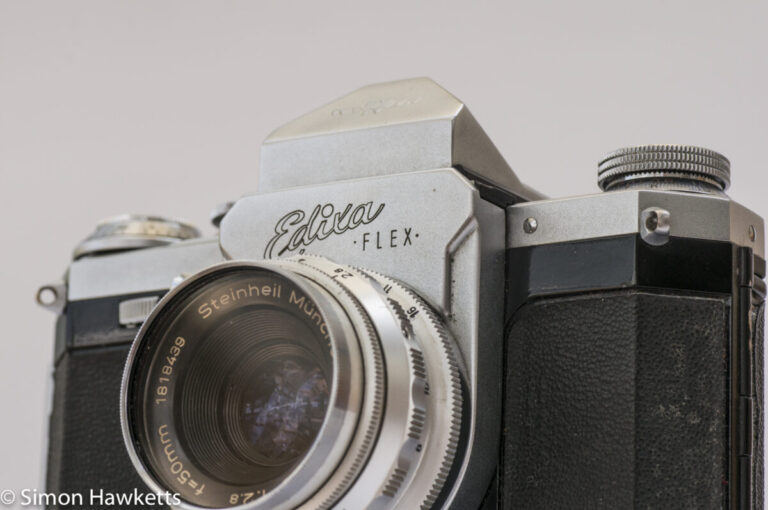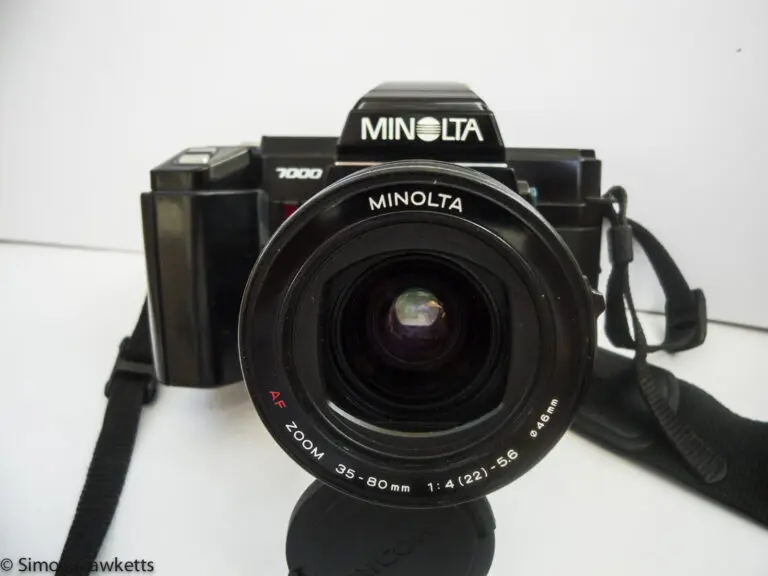The rather flimsy Edixa-Mat Reflex B SLR camera
This is a review of the Edixa-Mat Reflex B, an early 35 mm single lens reflex camera manufactured by the Wirgin company in Germany in about 1960.
My Edixa-Mat Reflex B camera
This is my second Edixa camera and is quite similar in appearance to my Edixa flex, although the actual mechanics are a bit different and slightly more advanced.
In many ways I bought this camera to see how it compared to my Edixa flex and because the Edixa range is a nice collectors’ camera. By that I mean they are not necessarily a good camera to buy to shoot with because of reliability issues, but for display and collection purposes I think they have ‘the look’.
I paid a slightly higher price for this unit – about £26, but I got more for my money because the camera was advertised as fully working and with both the waist level and the eye-level finder.
It turned out when I received it there was actually more than the seller realised, because in a folded Kodak negative envelope in the waist level finder case, I found an additional split-level focusing screen. Also, the eye-level viewfinder has an optional cold shoe accessory socket fitted. I have paired it with a Soligor flash unit, which I have in a few of the pictures above because it’s of a similar vintage and goes well with the camera.
The camera wasn’t actually fully functional when I received it. The slow shutter speeds were sometimes a bit reluctant to finish their travel, but a tiny amount of oil on the slow speed escapement under the bottom lid seemed to fix that.
The general cosmetic condition seems quite reasonable. A bit of the chrome work is slightly tarnished and the paint on the back panel is quite worn, but other than that everything seems pretty good.
Pictures of the Edixa-Mat Reflex B

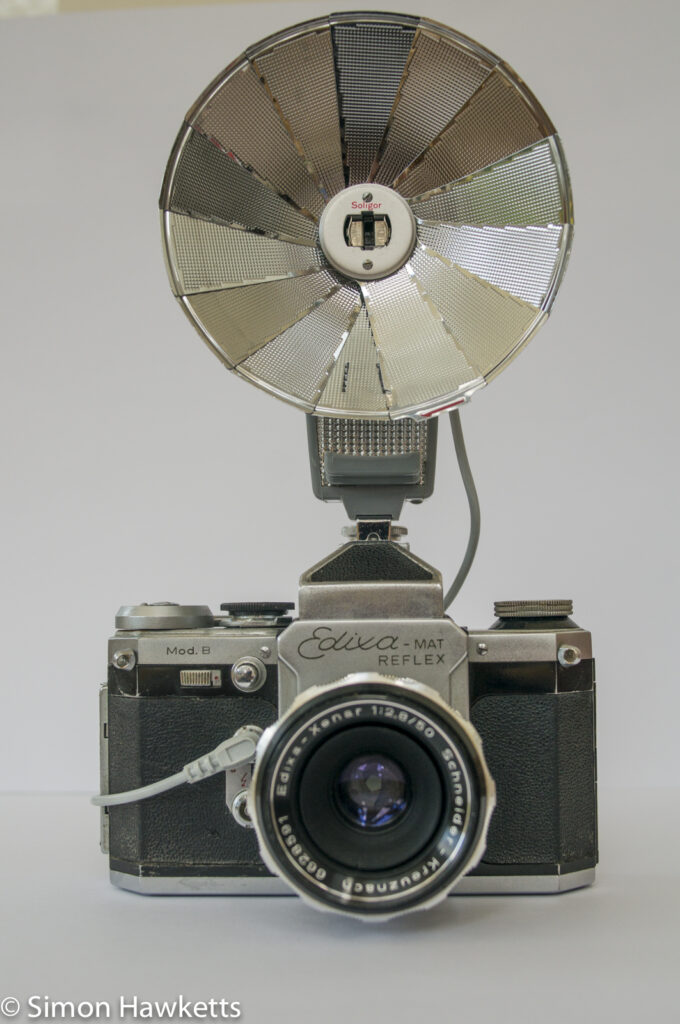
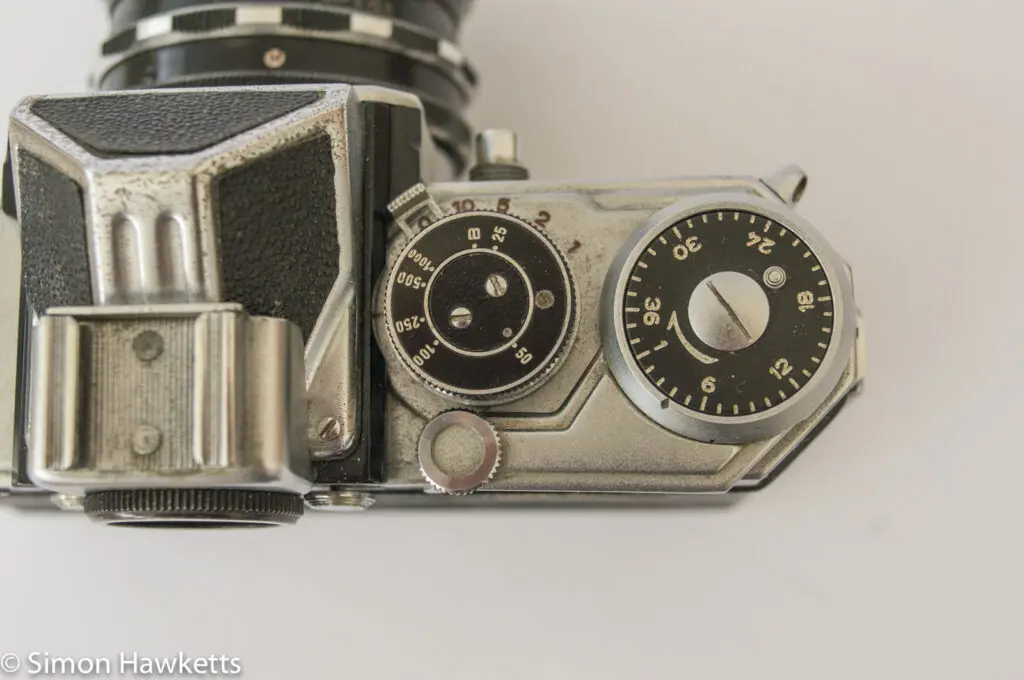

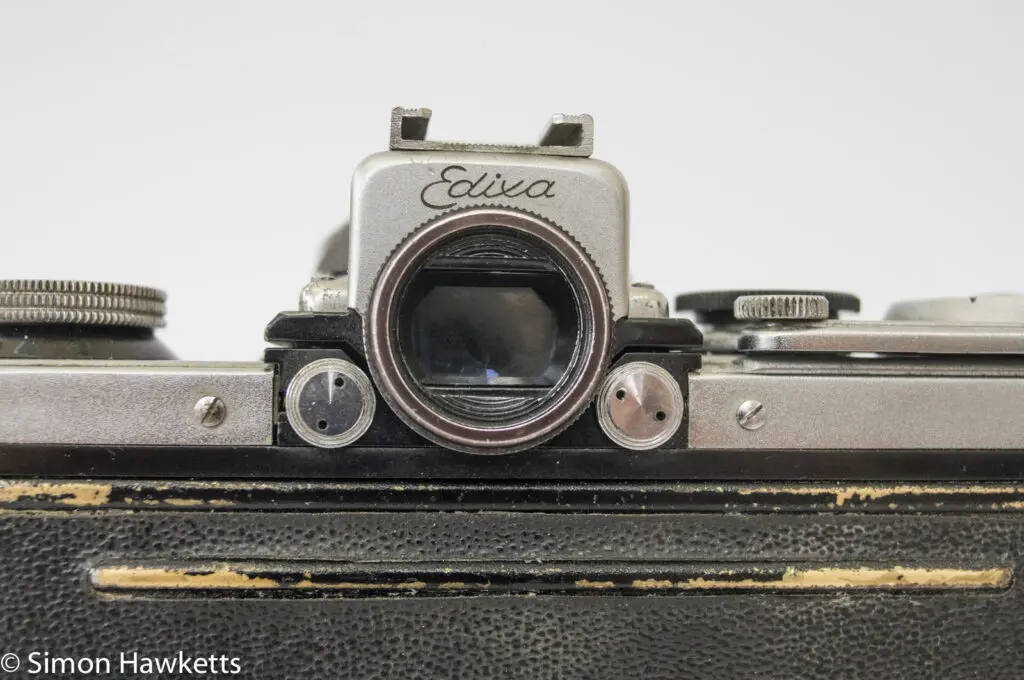
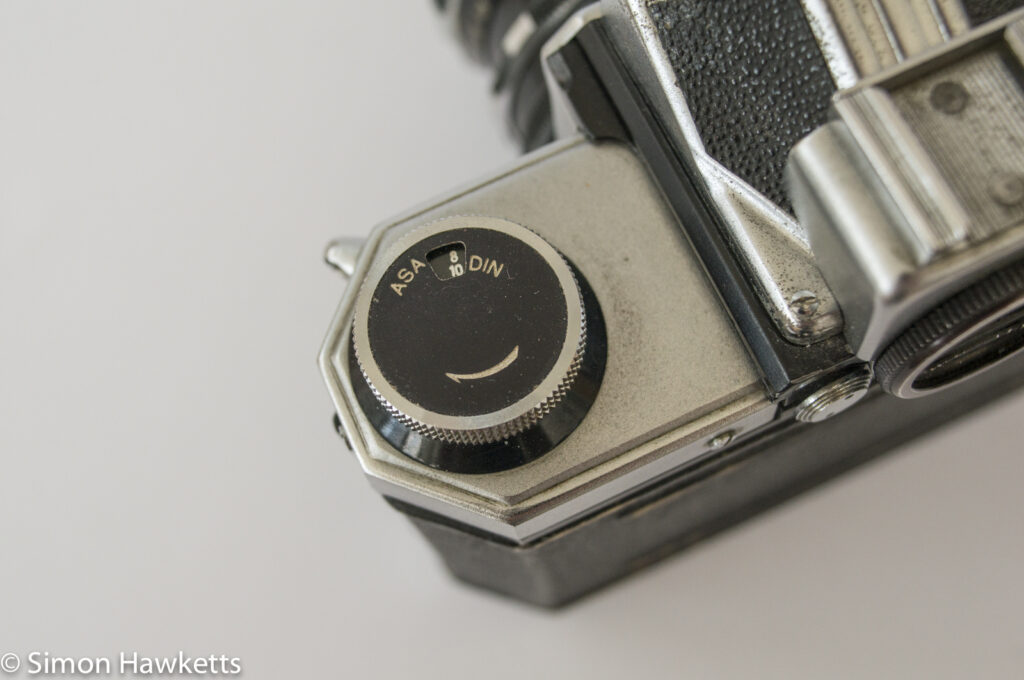
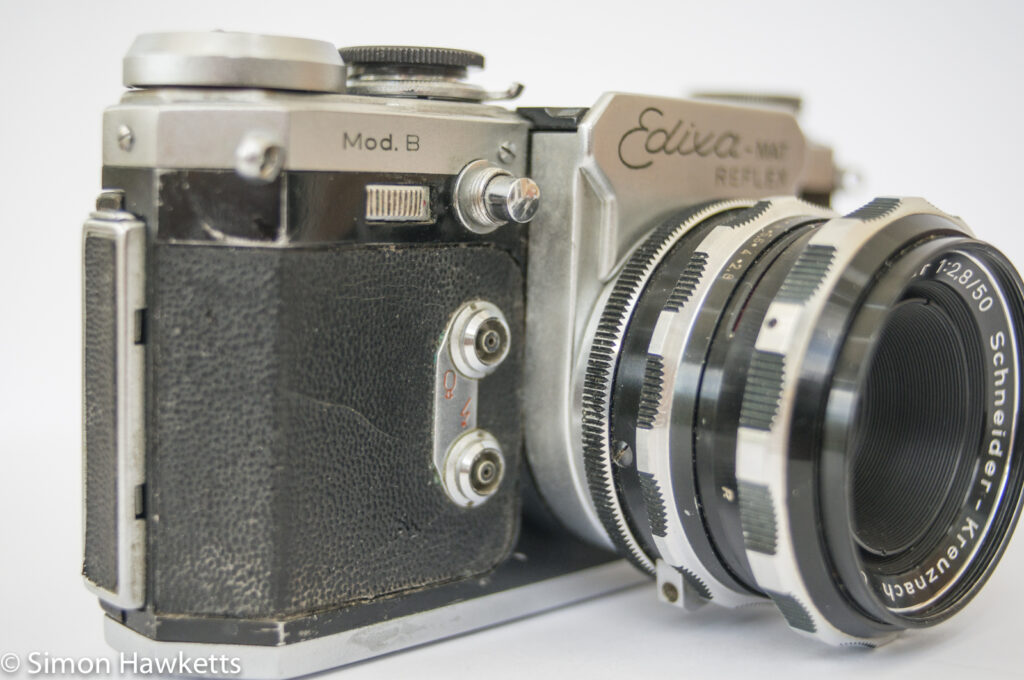
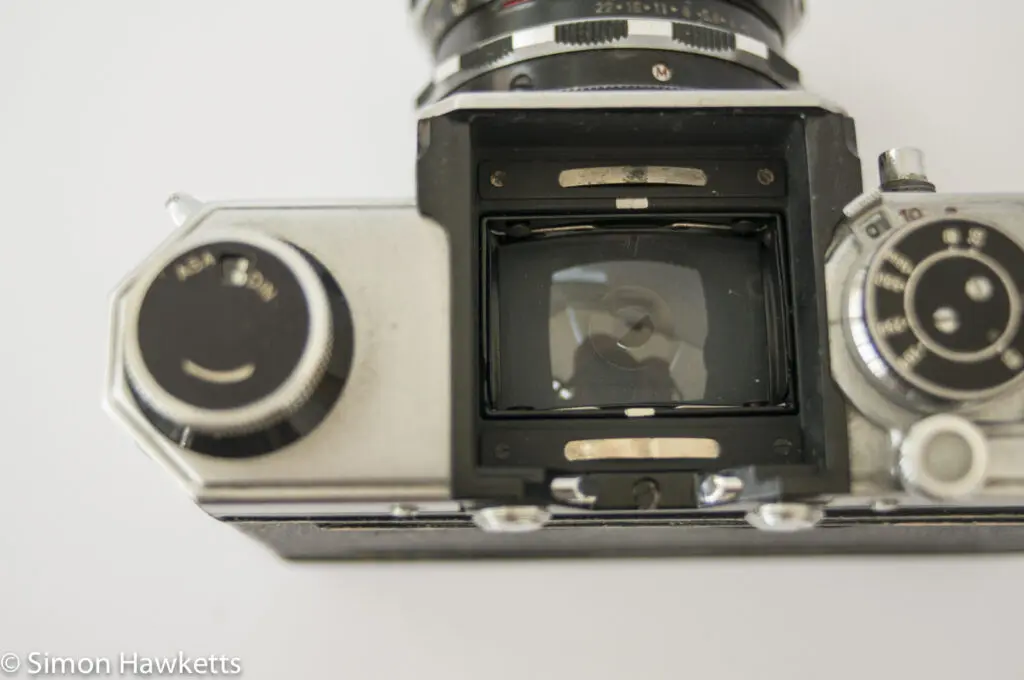
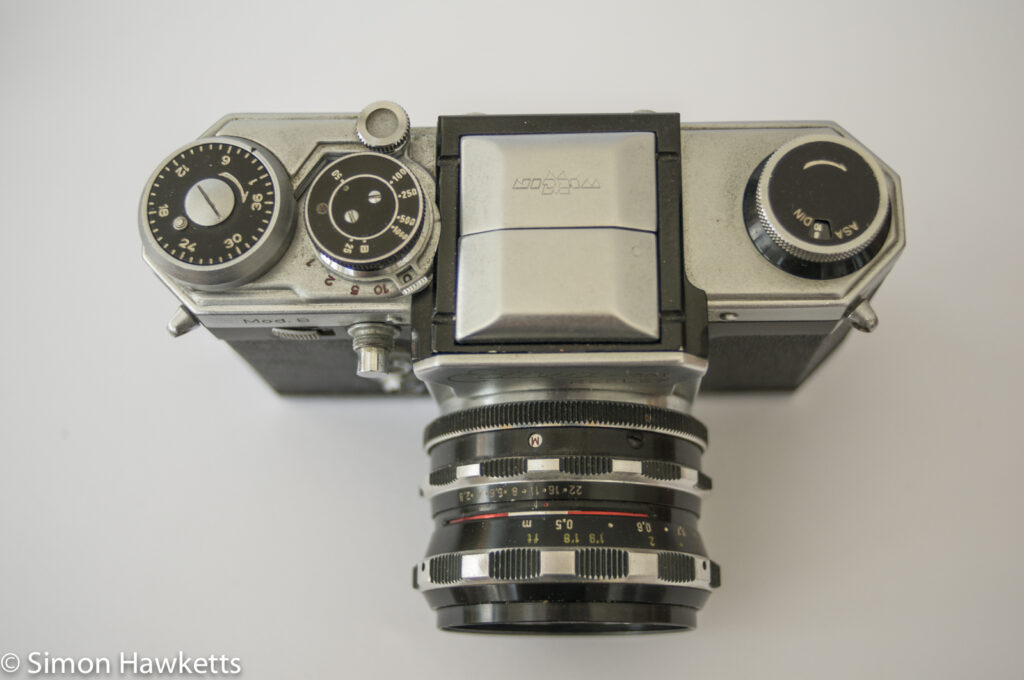
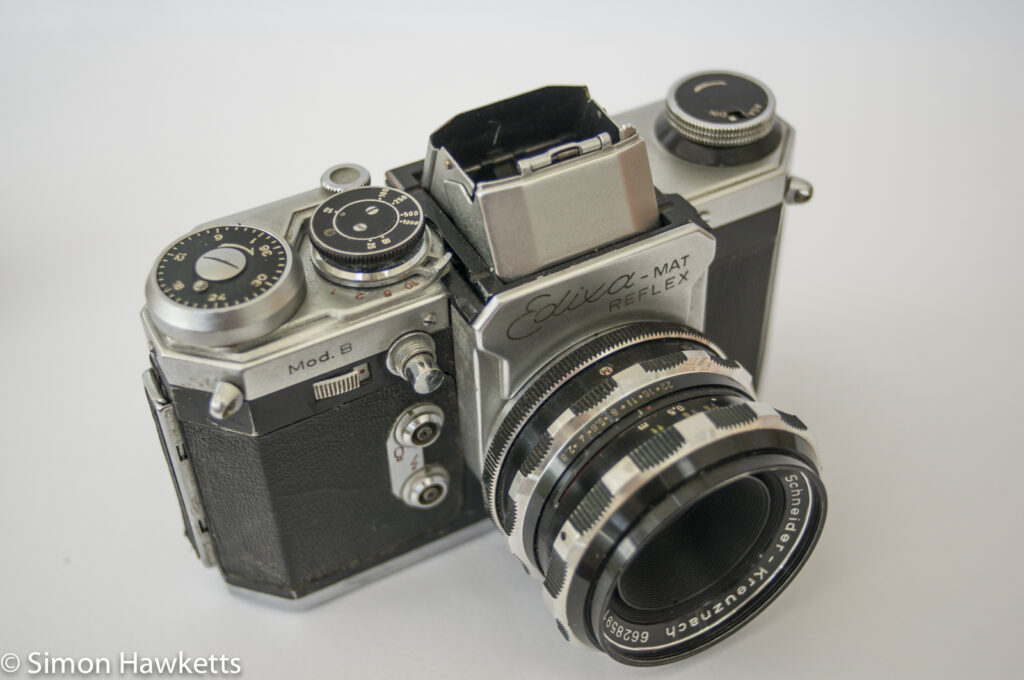
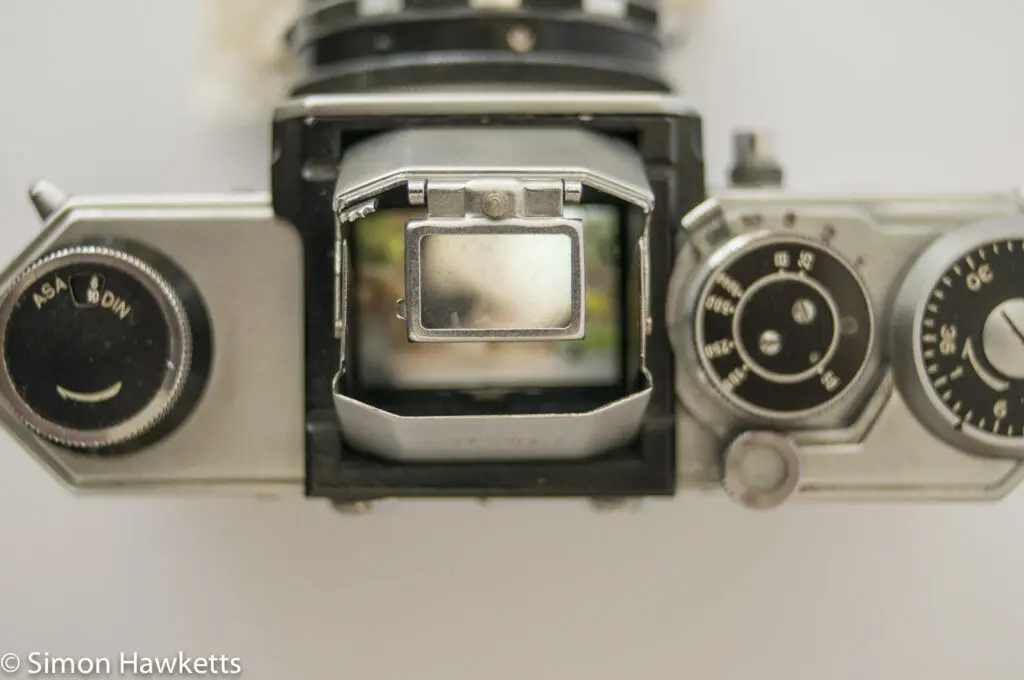
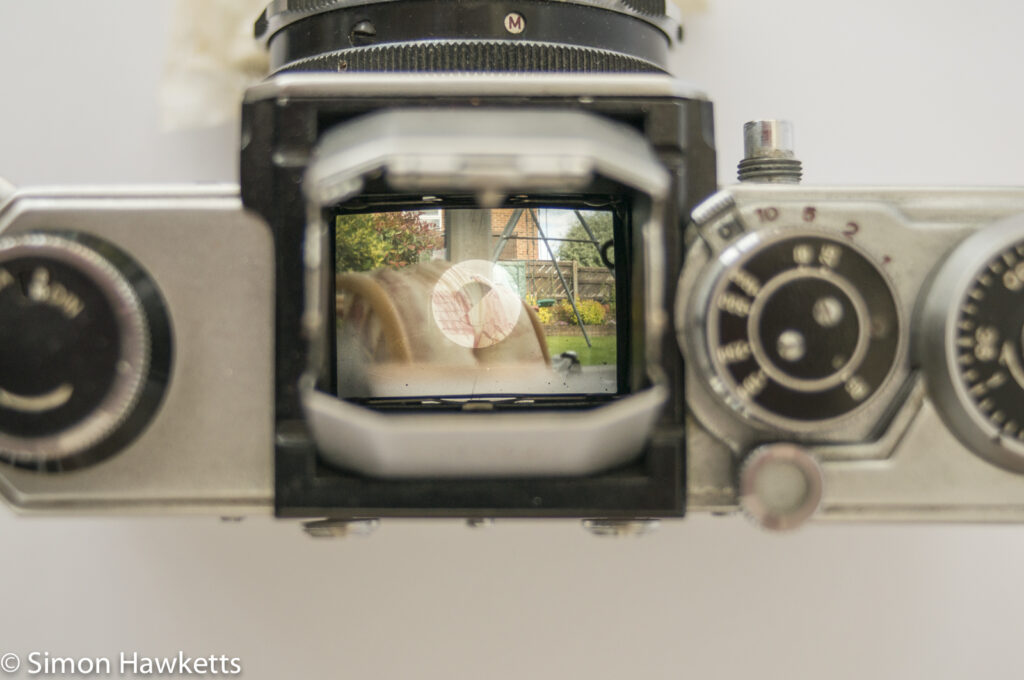
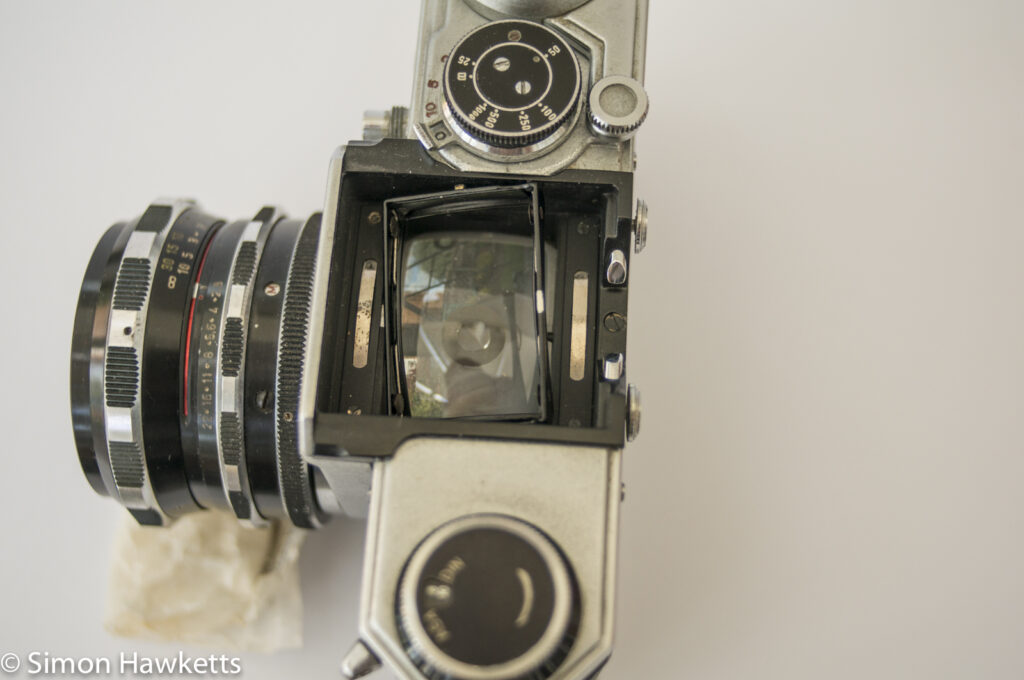

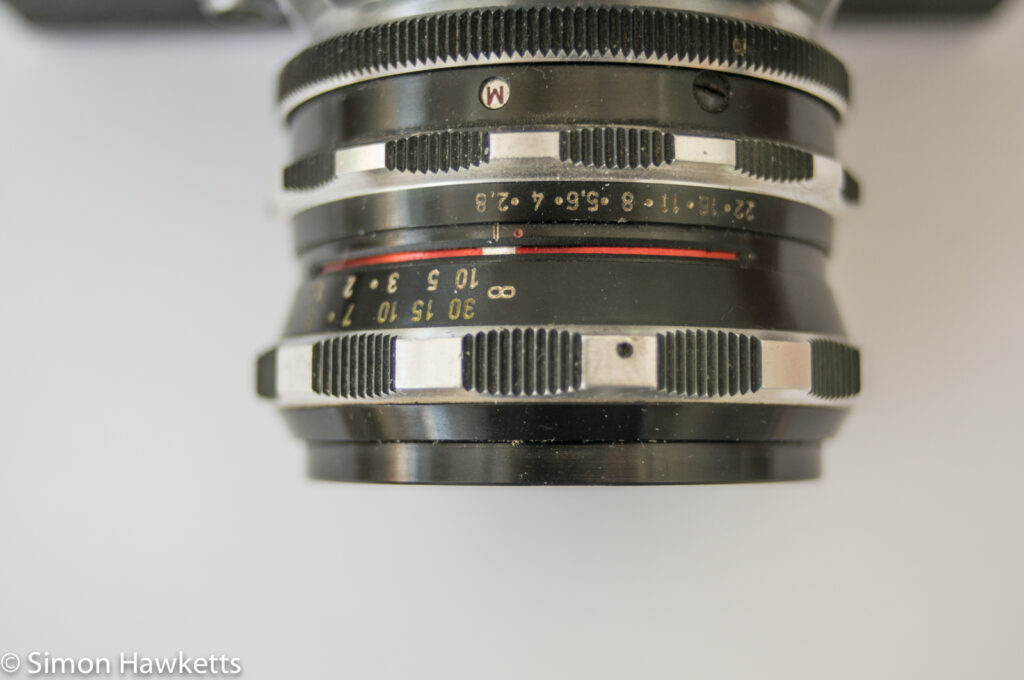
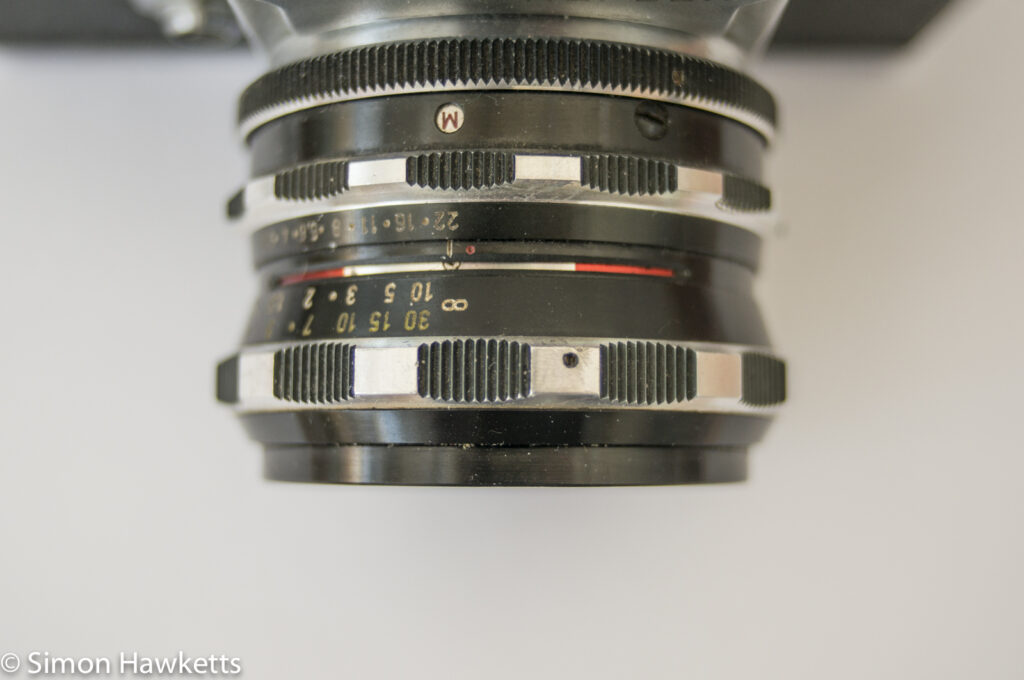
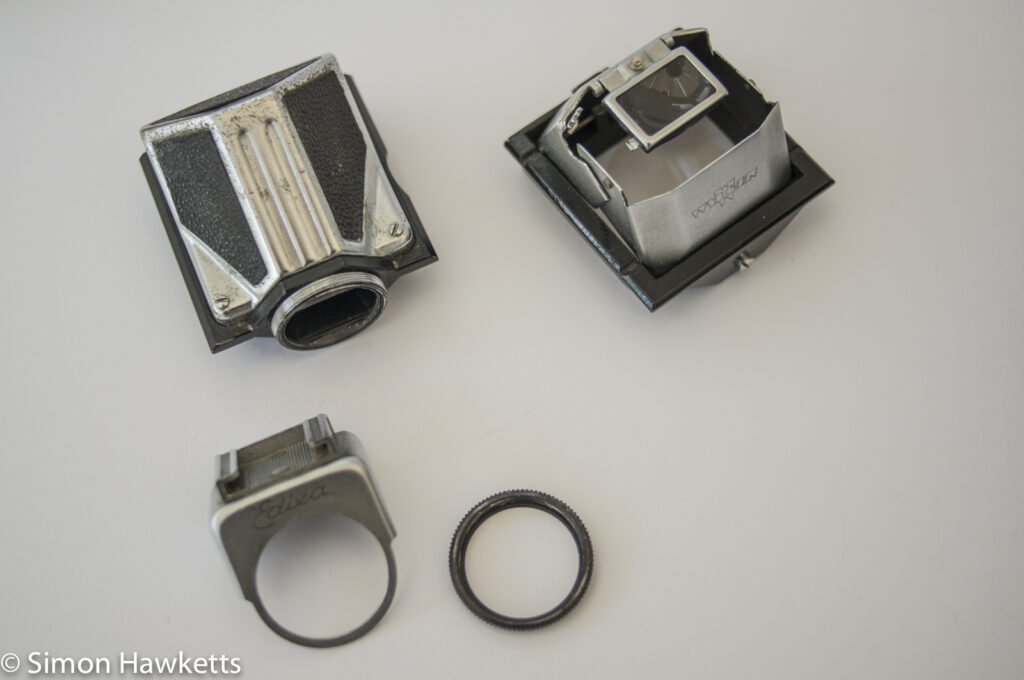
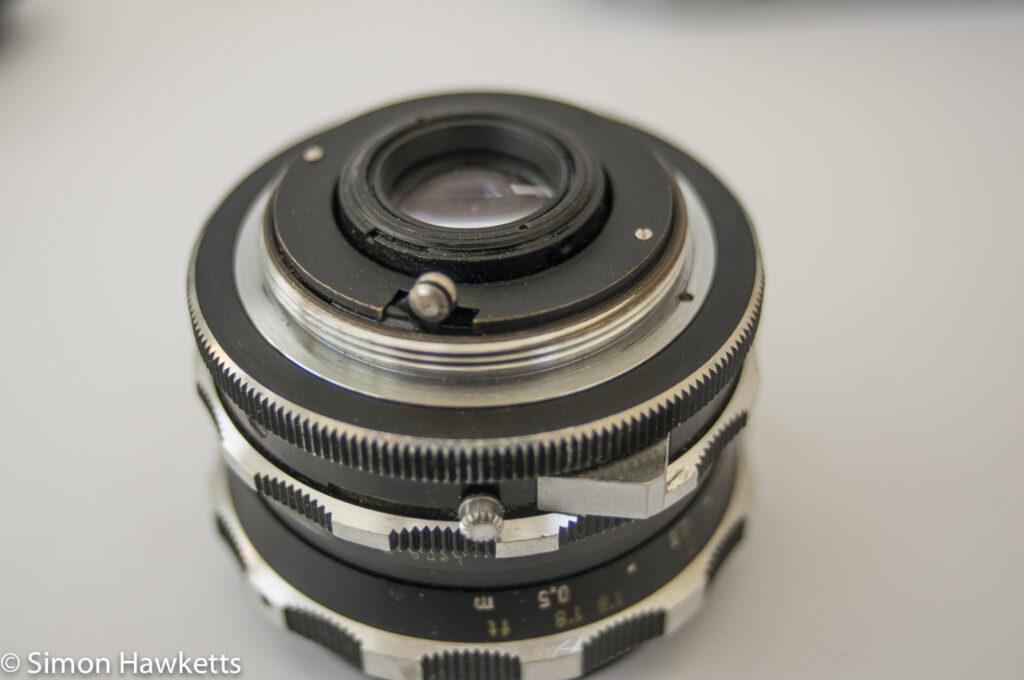
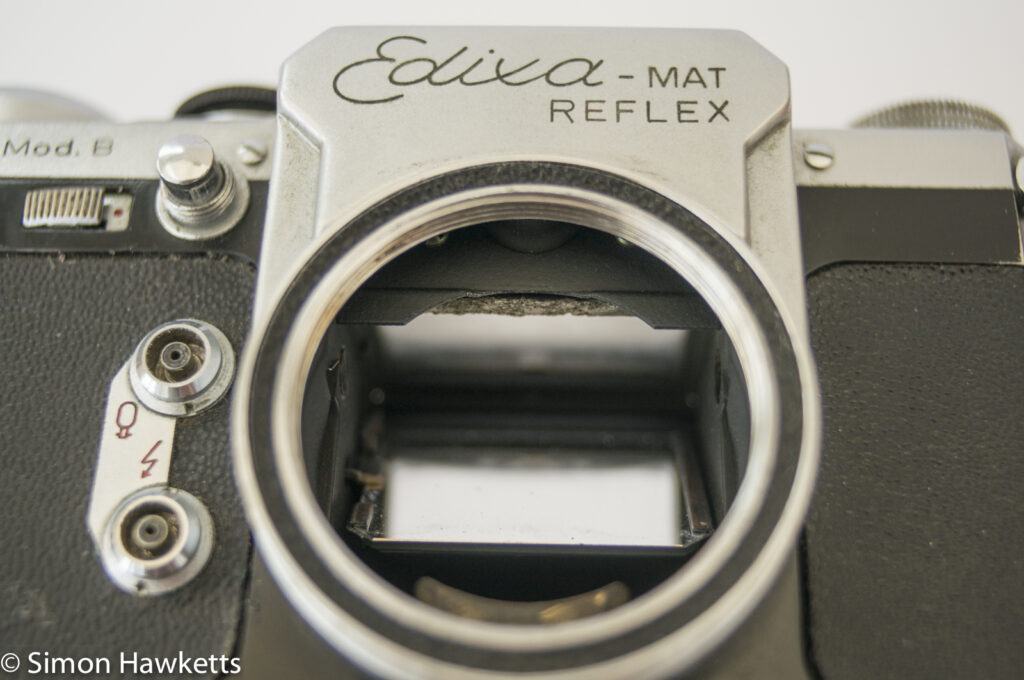
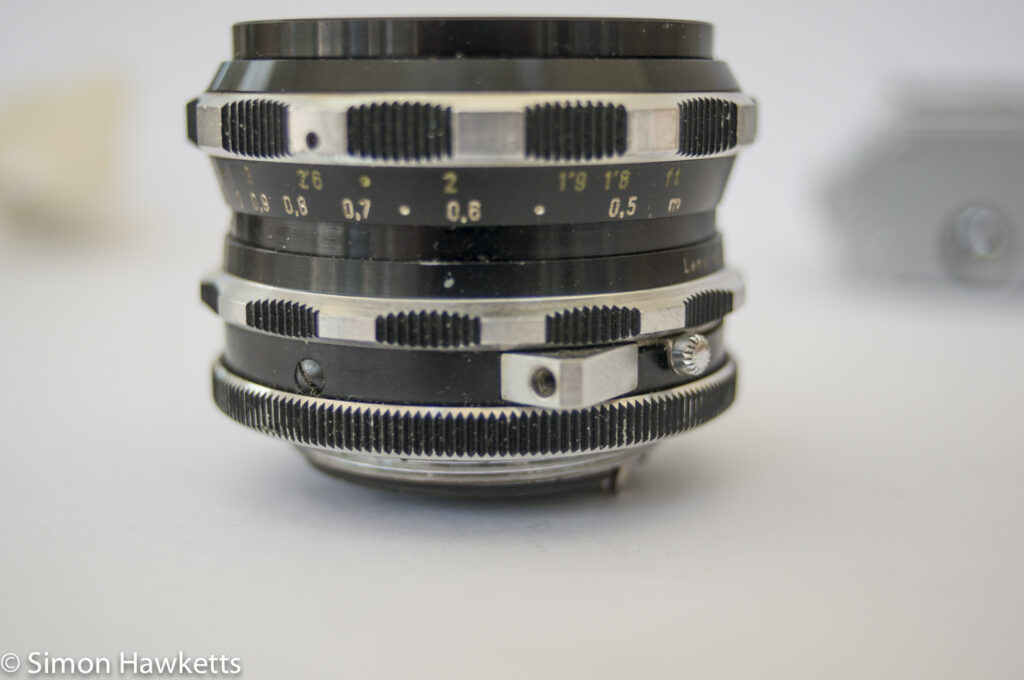
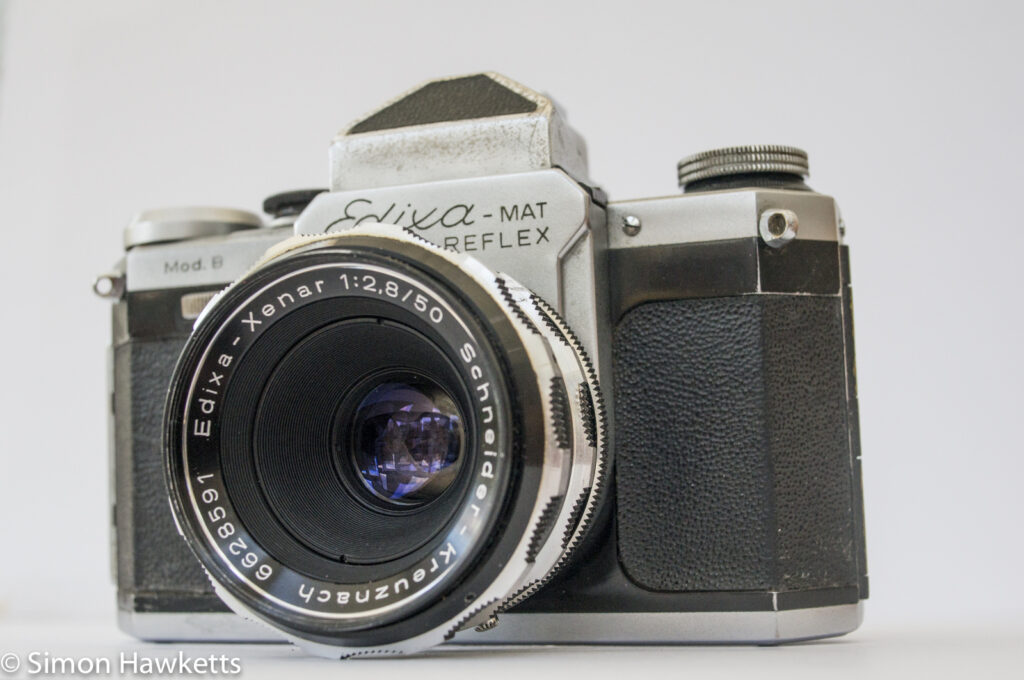
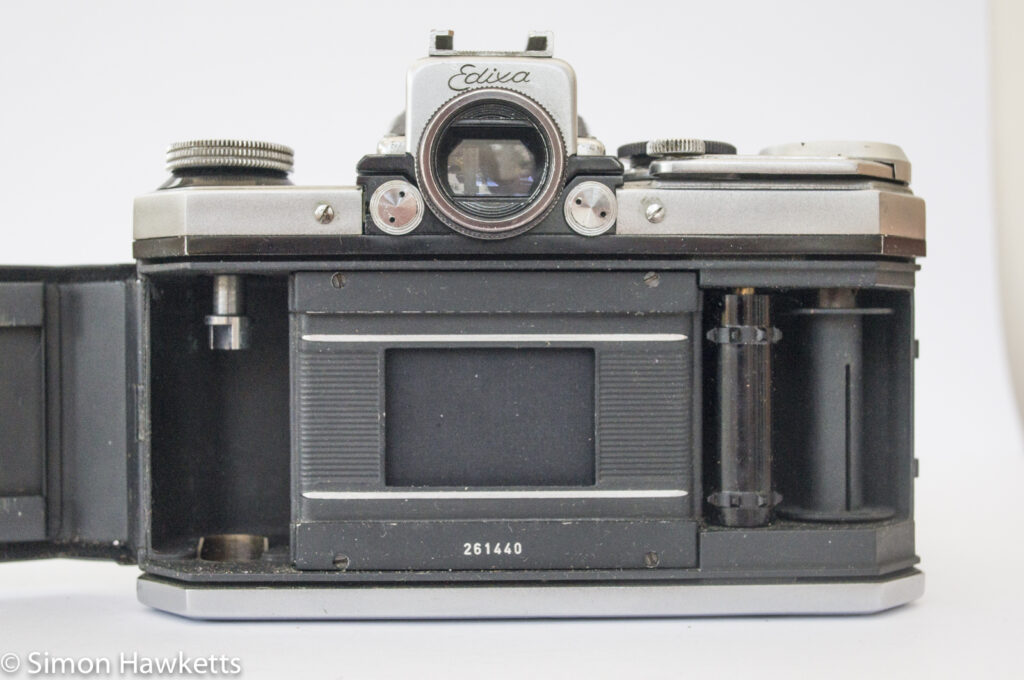
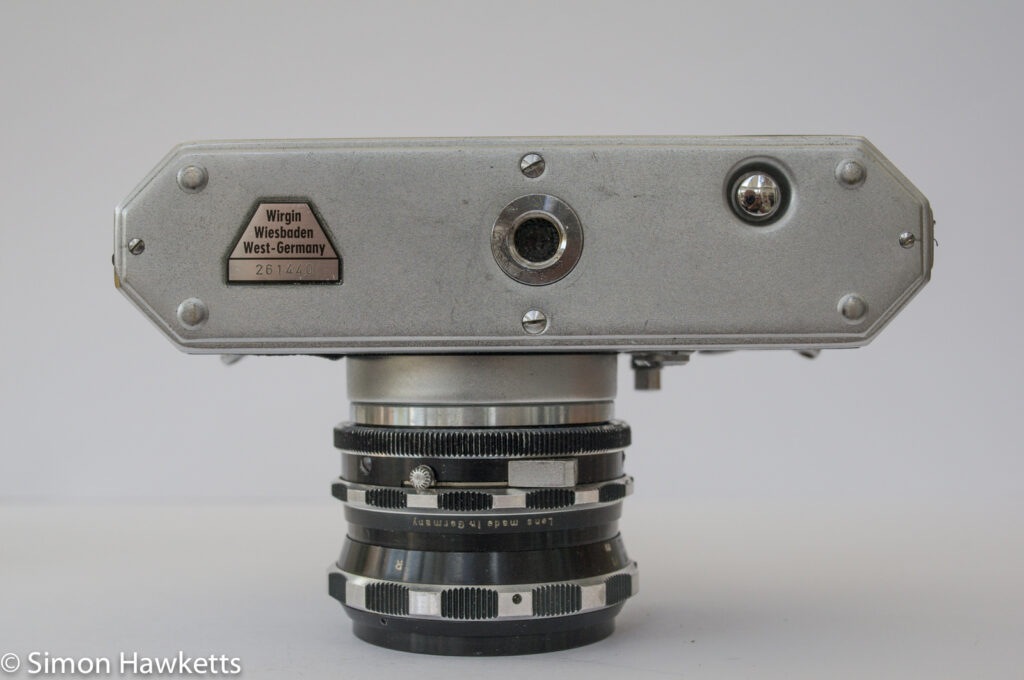
Edixa-Mat Reflex Mod B description
This is a fully manual, 35 mm single lens reflex camera made around 1960 by the Wirgin company in West Germany. For the date this was manufactured it has a pretty good feature set but, in common with the Edixa flex I own, seems somewhat flimsy and cheap compared to some other cameras.
Exposure
There is no light meter fitted to this camera, so exposure has to be determined with a hand held light meter or my using some other mechanism (sunny 16 rule for example). Once the exposure measurement has been made, the camera has a more sophisticated set of shutter speeds than the Edixa flex.
As well as the 1/25 to 1/1000 that the flex model has, this camera also has a slow speed control underneath the faster speeds, which allow speeds from 1 sec to 1/10 sec. This twin control arrangement reminds me of the Miranda D which does a similar thing.
There is an automatic stop down mechanism on the lens fitted to this camera, which means that the picture can be focused at full aperture for maximum brightness and the camera will automatically stop the lens down to the set aperture when the shutter is pressed.
There is also the added bonus of an instant return mirror, which is again something the Edixa flex didn’t have, and a small indicator in the top corner of the viewfinder to show if the shutter is not cocked. The shutter lock, which is on the Edixa flex, is also fitted to the front panel of this camera, allowing the photographer to stop the shutter being accidentally fired.
Lens
The lens fitted is an M42 mount Schneider-Kreuznach Edixa-Xenar 50 mm f/2.8 lens. This has a 5 blade aperture with a minimum f-stop of f22 and 1 stop adjustment ring. It looks a fairly substantial lens and being M42 mount it’s easy to use on modern digital cameras as well as a variety of vintage film cameras. One word of warning if you do use it on a modern camera with a mount adapter – set the lens to Manual aperture. I found that the lever which adjusts the aperture fouls the internal diameter of my NEX to M42 adapter if it’s not withdrawn into the lens.
There is an Auto-Manual switch on the lens which allows the lens to be stopped down as the aperture ring is turned or automatically controlled by the camera. There is also a cable release socket on the lens, which was used to stop the lens down when it was fitted to bellows or extension tubes. This is quite a novel idea which I’ve not seen before – a special cable release was sold with one button which operated two cables. One was fitted to the camera shutter and the other to the lens aperture and as the exposure was made the lens was stopped down as the shutter was released.
Another interesting feature of the lens is the depth of field scale. These are normally engraved on the focus scale as aperture markings around the focus set point, indicating the amount in focus at any particular aperture. On this lens, however, the depth of field scale is a silver zone around the focus point which expands and contracts as the aperture is adjusted.
Viewfinder & focus screen
The viewfinder and focus screen are replaceable, although as with the Edixa flex I find the viewfinder removal quick tricky to do with one hand, so it becomes a ‘put the camera down and fiddle’ operation.
The focusing screen however is easy to replace – a quick pull on the side of the retaining assembly, and it’s out, and the screen can be dropped out by turning the camera upside down (with a hand in place to catch the screen!)
As I said above, there is a waist level finder supplied with this camera, which has an integrated pop-up magnifier for the centre of the image. Having tried this, I wonder how any of the photographers who used them ever managed to get a picture in focus! It seemed to me to have far too much magnification to be usable, and I couldn’t clearly see the image at all.
Other features
Other notable features of the camera are its weight, which is surprisingly heavy considering the fact that the camera seems quite flimsy. The frame counter is set manually as the film is loaded, and the film type indicator I couldn’t work out how to adjust until I looked at the manual and discovered a small lever on the underside of the knob which allows the display of ISO speed or film type.
Edixa-Mat Reflex B Specifications
- Edixa-Mat Reflex Mod B 35 mm SLR
- Shutter 1 sec to 1/1000 + B set with two dials
- Front mounted shutter release with lock
- Frame counter set manually on film load
- X & M flash sync socket
- Film type indicator
- Removable / Replaceable viewfinder with eye-level and waist level finders available
- Removable / Replaceable focusing screens
- Instant return mirror
- Schneider-Kreuznach Edixa-Xenar 50 mm f/2.8 M42 mount lens
- f/2.8 to f/22 aperture range.
- Body Serial No: 261440
- Lens Serial No: 6628591
- Manual of the Edixa-Mat reflex on-line
Discover more from Everything Vintage
Subscribe to get the latest posts sent to your email.


